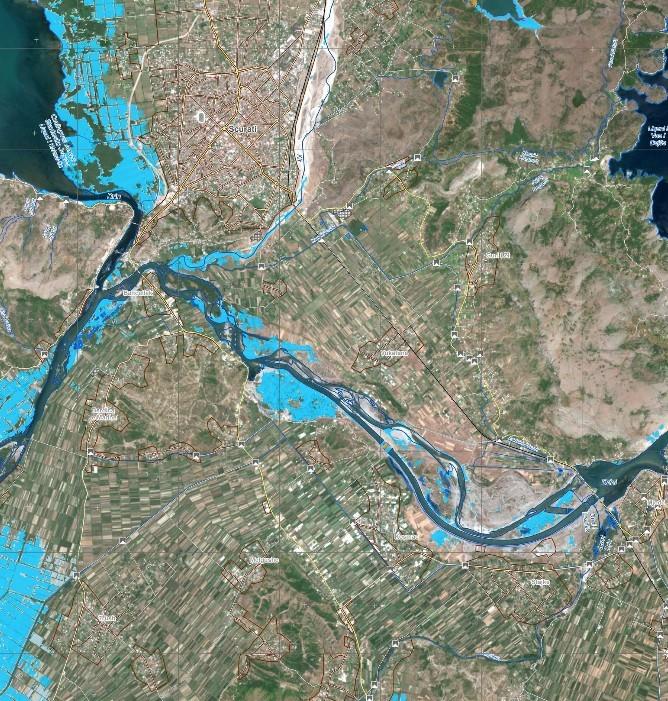
by Richard Davies, FloodList
Heavy rain and melting snow caused flooding and landslides in several countries in south-eastern Europe during March 2018. Copernicus Emergency Mapping Service was activated to monitor the flooding in Albania, Croatia and Greece. Flooding was also reported in Romania, Bosnia and Herzogovina, Serbia, Montenegro, Bulgaria and northern Turkey.
Albania
In Albania, Shkodër County in the north-west was the worst affected area, where the Drin and Bojana rivers overflowed from around 9 March. Several villages were left isolated by the flood water, which at one point covered 2,285 hectares of land according to local authorities. Flooding was also reported in areas of Durrës County. Several minor landslides were also reported across the country. Copernicus monitored flooding in city of Shkodër, Grilë, Dajç, Gomsiqe, and Barbullush, well into late March.
Croatia
In Croatia, fire service, civil defense and military per-sonnel were deployed to assist flooded communities in parts of Sisak-Moslavina and Karlovac counties. A landslide in Hrvatska Kostajnica, Sisak-Moslavina County, on 13 March, left several houses destroyed or damaged. No fatalities were reported. Streets and homes were also flooded in the area after the Una River overflowed. The river stood at 4.54 metres on 13 March.

Elsewhere in Croatia, the Korana River in Karlovac was at red level warning stage on 13 March, standing at 7.81 metres. Disaster officials said the rising Sava River was a cause for concern, in particular at Jasenovac where levels were at orange warning stage, standing as at 8.54 metres.
The situation continued into late March, where Copernicus monitored flooding in areas along the Sava, including Kutina and Novska in Sisak-Moslavina County, and Lijevi Dubrovčak, Zagreb County.

Bosnia and Herzegovina
The overflowing Una River also caused flooding in Bihac and Bosanska Krupa in Bosnia and Herzegovina. Levels of the river had increased by almost 30 cm in 24 hours from 12 March 2018 and by 13 March stood at 1.40 metres. The overflowing Sana River at Sanski Most also caused some flooding. As of 13 March, the river stood at 3.91 metres.
Romania
In Romania, the worst of the flooding was in the counties of Covasna and Brașov, where hundreds of homes were damaged. On 14 March 2018, seven people were rescued after they were left isolated by flooding in areas around Șercaia and Mândra in Braşov County. Evacuations were carried out in the village of Căpeni, Covasna County due to flood threat from the River Olt.
EFAS forecasts for the event
EFAS sent a formal notification for Lonja, Ilova & Pakra Rivers on the 6 March, a week before the event occurred, followed by more formal notifica-tions for the concurring events in the Sava river basin. A flash flood notification was sent for Covasna in Romania on the 13 March warning for flash floods on the 14th. Several other countries and regions were affected by the wet conditions in early to mid-March, and 14 formal flood and 21 flash flood notifications were sent during this period over the south-east European region.

